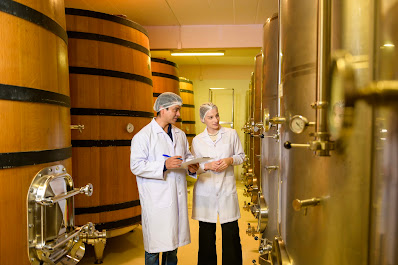Ensuring Enzyme Stability: Best Practices for Papain and Bromelain Storage
Papain and bromelain, two widely used proteolytic enzymes, offer significant benefits in various industries, including pharmaceuticals, food processing, and cosmetics. However, their efficiency depends largely on proper storage and handling. Maintaining enzyme stability is crucial to preserving their activity and ensuring consistent performance.
Understanding Enzyme Sensitivity
Enzymes are biological catalysts that are highly sensitive to environmental factors. Temperature, pH, humidity, and exposure to contaminants can all impact their stability. Papain, derived from papaya latex, and bromelain, extracted from pineapple, are both proteases that require controlled conditions to maintain their effectiveness.
Optimal Temperature Conditions
Temperature fluctuations are one of the primary causes of enzyme degradation. Ideally, papain and bromelain should be stored in cool conditions, typically between 2°C and 8°C for maximum stability. While some formulations allow for room temperature storage, refrigeration is generally recommended to prolong enzyme activity.
Moisture Control and Protection from Humidity
Excess moisture can activate enzymes prematurely, leading to loss of potency. Storing papain and bromelain in airtight, moisture-proof packaging helps prevent degradation. Desiccants, such as silica gel packs, are often used to absorb excess humidity and protect the enzyme from environmental exposure.
pH Stability and Buffering
Papain and bromelain function optimally within specific pH ranges. Bromelain is most active between pH 4.5 and 7.5, while papain operates effectively between pH 5.0 and 7.0. Storing these enzymes in buffered solutions or formulations that maintain a stable pH can prevent loss of activity over time.
Protection from Light and Oxidation
Exposure to light, particularly UV radiation, can cause enzyme degradation. Opaque or amber-coloured containers are commonly used to store these enzymes, reducing the risk of photodegradation. Additionally, antioxidants may be incorporated into enzyme formulations to prevent oxidative damage.
Minimising Contaminant Exposure
Contaminants such as microbial growth or heavy metal ions can reduce enzyme efficiency. Ensuring that storage environments are clean and free from potential contaminants helps maintain the purity and effectiveness of papain and bromelain.
Best Practices for Prolonged Shelf Life
For long-term storage, freeze-drying (lyophilisation) is often used to stabilise enzymes. This process removes moisture while preserving the enzyme's structure, allowing for extended shelf life without significant loss of activity. When reconstituting freeze-dried enzymes, using sterile and pH-controlled solutions can further enhance their longevity.
By following best practices in enzyme storage, industries can maximise the efficacy of papain and bromelain, ensuring their reliability in diverse applications. Proper handling and preservation techniques not only extend shelf life but also contribute to consistent product performance, reinforcing the value of these remarkable enzymes.
Source - https://www.biolaxienzymes.com/enzyme-stability-and-storage-best-practices-for-papain-and-bromelain/



Comments
Post a Comment